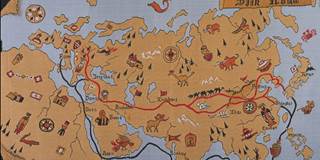The European Union is increasingly divided over how best to manage economic relations with an increasingly outward-looking China. On the whole, European governments are probably right to be wary of Chinese investment; but that doesn't mean they should ignore China's vision of cross-border development.
PRINCETON – Once upon a time, everyone assumed that there was a single phenomenon called globalization, whereby cross-border flows of financial capital drove innovation, industrialization, development, and trade. But Chinese President Xi Jinping’s Belt and Road Initiative (BRI) advances an alternative vision of globalization, based on an integrated system of physical infrastructure. The material world of ships and trains will replace the immaterial world of financialization.

PRINCETON – Once upon a time, everyone assumed that there was a single phenomenon called globalization, whereby cross-border flows of financial capital drove innovation, industrialization, development, and trade. But Chinese President Xi Jinping’s Belt and Road Initiative (BRI) advances an alternative vision of globalization, based on an integrated system of physical infrastructure. The material world of ships and trains will replace the immaterial world of financialization.